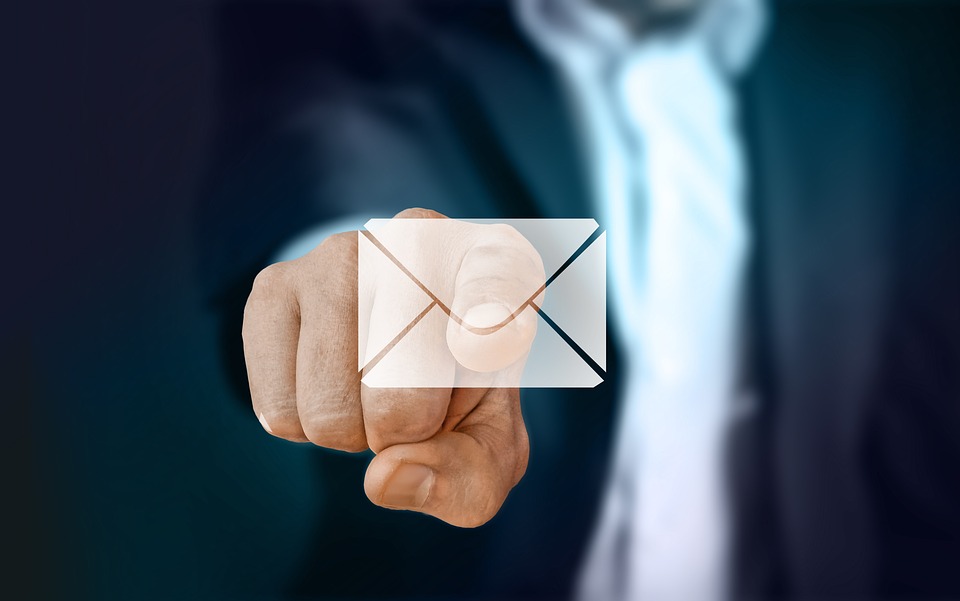
While growing your email list is probably your main focus, a really important factor when it comes to email marketing that seems to be overlooked is your emails’ open rates.
If your subscribers aren’t opening your emails, then your strategy isn’t working
Once you understand the importance of open rates, you have the potential to dramatically build your email list, just by making a few simple tweaks to your strategy.
This post is going to explain what that strategy is, and how you can use it to create emails that:
- Your subscribers will love
- Will give you great open rates
Good To Know
Before we begin talking about strategy, let’s go over a few things that will help you understand how emails work, so that you can focus on exactly what it is you need to up your email game.
When you send emails to your list, your email is assessed using something called a Sender Score. This is a trust score that email providers use to decide if you are authentic or spam. You are scored every time you send an email. If subscribers are opening and reading your email, then your score goes up. If they are unsubscribing or marking you as spam, your score goes down. So what happens if your score drops?
You have less chance of future emails getting to your recipients.
Interesting, isn’t it? It just goes to show how important a good quality email strategy is. Now, let’s start looking at some tips on how you can improve yours!
Step 1: Understand the privilege of being in someone’s email inbox
Our email inbox is a very personal piece of property to us. It’s one of the first things we check in the morning, and we use our inbox to stay updated on the topics and conversations that we care about most.
To be invited to send an email to someone who you’ve never met is a huge honor. Take the responsibility seriously and always remember that above everything else. Think about how you can give back to your customers, build a relationship, and how you can serve your subscribers with great content that they will want to read time and time again.
Step 2: Understand who your subscribers are and what they need from you
If you want subscribers to open your email, then it’s pretty obvious that you need to give them something worth opening. To do this, you need to understand exactly who your customers and subscribers are and why they signed up to your list in the first place.
Are they looking for:
- Information?
- Advice?
- Support?
- Exclusive promotions?
- Inspiration?
What your subscribers want really depends on your business model, but you must understand this first before deciding on how you can best serve them.
Step 3: Be clear about your aims as a business
Since you love what you do, make sure that your emails portray this great passion of yours. Yes, list building is important, but if you don’t have a purpose to it, it is irrelevant and your customers can sense this dishonesty. Think about what your goals are as a business:
- What do you want to achieve? Are you looking at turning subscribers into customers? Or is your goal about retaining existing customers?
- What do you need to promote?
- How is your email list going to help you market your products and services?
Always start with the end goal in mind. Have a clear strategy about what you want to achieve from your email list over the next month, 3 months and 12 months, and work backwards from there. This will give you far better focus about what emails you are going to send and why, so you don’t go into panic-mode and simply fire random emails off to your subscribers in the hope that some of them buy from you.
Step 4: Build your email strategy
It isn’t enough to have an email list that you simply send emails to occasionally. As a business owner, you need to think about your email list as a key asset to your business; one that requires a sound and solid strategy. So set aside some time to put together an email strategy. Here’s what is should contain:
Part A: Frequency of campaign
Decide how frequently you want to email your subscribers. There are a couple of things to consider:
Email too infrequently and your subscribers might forget who you are. Part of email marketing should always be about building an awareness of your brand, and you won’t be able to do that if you are only sending emails once in a blue moon.
On the other hand, think carefully about bombarding your subscribers with daily emails. Remember that the average person gets 121 emails in their inbox PER DAY (according to Radicati). People are busy and have busy lives, so make the time they spend scanning their inbox an easy and pleasant experience.
It can be a good idea to ‘brand’ your emails to a particular day of the week or day of the month so people know when they will receive it and why. For example, if you are a diet coach, you could have a Monday Motivation email campaign where you send a motivating email every Monday to your subscribers to help get them through the most difficult diet day of the week.
Part B: Purpose of campaign
If you really want your email campaign to work for your business, then you need to spend quality time thinking about how you are going to give your emails some meaning. They should always have a purpose to them and that theme should be consistent across the majority of emails you send (with the exception of promotional ones).
Step 5: Create a winning design
In recent email marketing research, it was found that 88% of subscribers preferred to receive html emails instead of plain text.
Design is clearly important to subscribers, and they want information that is well formatted and easy to digest. This includes headings, images and structure.
Most email platforms will give you the option of sending an email in either html or plain text. At Projects Made Simple LLC, we like to use Mailchimp, which gives you this option as well as a number of engaging html email template designs.
Spend time thinking about how you want to design your email so that it is going to appeal to your ideal customer. If you are a product-based company, consider adding in high quality images that people can quickly scan. Consider adding sub-sections to divide your newsletter up into easy-to-read sections.
Step 6: Craft an excellent email
The same rules you follow to craft high quality blog posts also apply to writing high quality emails. Here’s a breakdown of what you need to consider:
Part A: An attention grabbing subject line
The subject line has to be attention grabbing. These types of subject headings tend to do well:
Something personal
Highlighting an offer, discount, or limited-time deal
A funny subject heading
Something with an bit of mystery to it
A taste of what to expect in the full email
Avoid the following mistakes, as they can put readers off and make your email look like it belongs in the spam folder:
All upper case. You don’t want to seem aggressive toward your customers, do you?
Read this, hi, open me, I saw this…. These are all classic tactics used by spam.
Anything generic is just too boring to be opened.
Part B: Add a curiosity-building introduction paragraph
If your subscribers open the email, your next job is to grab their attention enough to read the full email (and hopefully click through to your links to lead them back to your website). It is worth spending the time crafting a engaging opening paragraph that will really grab their attention and tempt them to read on. One good tactic is to let them know to expect something interesting further down the email.
Part C: Use meaningful links (that don’t look like spam)
A clearly-worded, meaningful link is more likely to be clicked on than either a vague one or something that looks slightly spam-like. So avoid things like:
“Click Here”
“Anexampleofabadlink.com/12345678”
Instead, use links that will get the reader excited about clicking:
“Grab your 10% discount today!”
“Book your free consultation now!”
Part D: Personalize the email
Research carried out by The Aberdeen group found that a personalized emails improved click through rates by 14% and conversion rates by 10%.
Try personalizing your emails by addressing your subscriber by their first name. Most (if not all) of the big email providers will allow you to do this with ease, and it really does add that personal touch to make your subscriber feel more included.
Conclusion
Putting these strategies in place will help to increase open rates on your email campaigns and will also create a more personalized relationship with your customers. Open rates are never something that should be overlooked or placed at the bottom of your priority list. After all, if you’ve put time and effort into building your email list, then surely you should spend an equal amount of effort into making sure your emails are read.
If you are looking to build your email marketing strategy or need help sending weekly newsletters to your subscribers, please contact us via email info@projectsmadesimplellc.com or by calling us at 503-395-8420.




